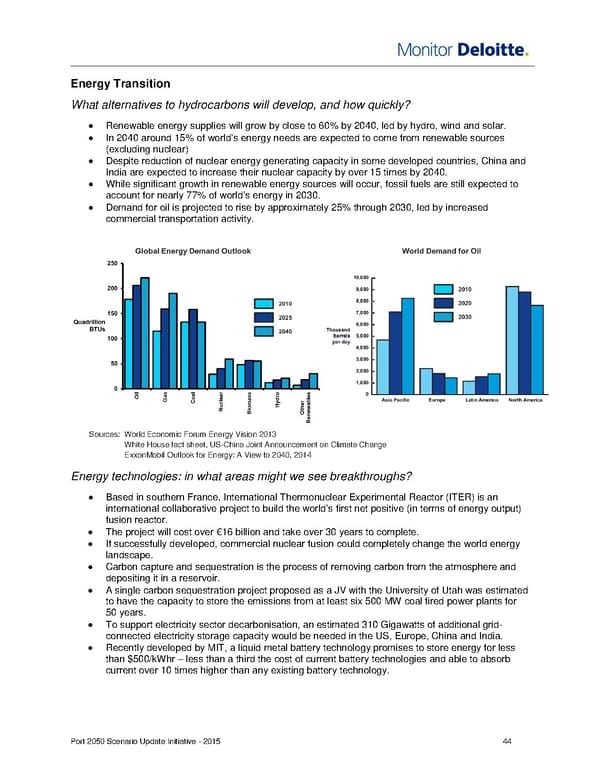Energy Transition What alternatives to hydrocarbons will develop, and how quickly? • Renewable energy supplies will grow by close to 60% by 2040, led by hydro, wind and solar. • In 2040 around 15% of world’s energy needs are expected to come from renewable sources (excluding nuclear) • Despite reduction of nuclear energy generating capacity in some developed countries, China and India are expected to increase their nuclear capacity by over 15 times by 2040. • While significant growth in renewable energy sources will occur, fossil fuels are still expected to account for nearly 77% of world’s energy in 2030. • Demand for oil is projected to rise by approximately 25% through 2030, led by increased commercial transportation activity. Sources: World Economic Forum Energy Vision 2013 White House fact sheet, US-China Joint Announcement on Climate Change ExxonMobil Outlook for Energy: A View to 2040, 2014 Energy technologies: in what areas might we see breakthroughs? • Based in southern France, International Thermonuclear Experimental Reactor (ITER) is an international collaborative project to build the world’s first net positive (in terms of energy output) fusion reactor. • The project will cost over €16 billion and take over 30 years to complete. • If successfully developed, commercial nuclear fusion could completely change the world energy landscape. • Carbon capture and sequestration is the process of removing carbon from the atmosphere and depositing it in a reservoir. • A single carbon sequestration project proposed as a JV with the University of Utah was estimated to have the capacity to store the emissions from at least six 500 MW coal fired power plants for 50 years. • To support electricity sector decarbonisation, an estimated 310 Gigawatts of additional grid- connected electricity storage capacity would be needed in the US, Europe, China and India. • Recently developed by MIT, a liquid metal battery technology promises to store energy for less than $500/kWhr – less than a third the cost of current battery technologies and able to absorb current over 10 times higher than any existing battery technology. Port 2050 Scenario Update Initiative - 2015 44
 Monitor Deloitte - Final Report Page 45 Page 47
Monitor Deloitte - Final Report Page 45 Page 47